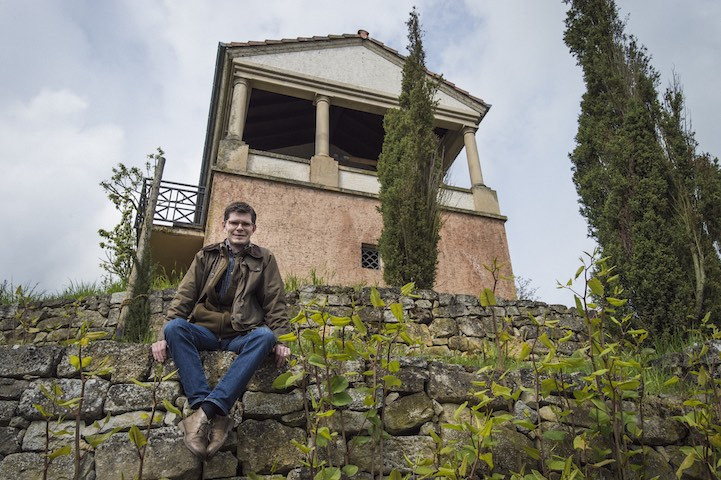According to Matthias Paulke, chargé de mission at Luxembourg’s National Archaeological Research Centre (CNRA), “Trier was one of the most important cities in the Roman Empire and inevitably this had an impact, but otherwise this area was something of a backwater.”
Trier was capital of the empire’s northern territories, and where Luxembourg is now was largely a staging point on the Roman roads to Reims and Boulogne to the west, and Metz and Lyon to the south.
The Vichten mosaic, which is displayed at the National History and Art Museum in Luxembourg City-Centre. Photo: MNHA
Tribes become civilised
Humans have been living in this part of the world for over 35,000 years. We started calling the area “Gaul” and the people who lived here “Celts” from about around 600 years before the common era (BCE). Julius Caesar waged a successful war against the Celts of Gaul, which ended in domination and genocide after 50 BCE.
The so-called Treveri Celtic tribe (who inhabited what we now call Luxembourg) were subdued as part of this campaign. Augusta Treverorum (Trier) was founded in 16 BCE, with “Luxembourg” being more firmly incorporated to the empire in the first decades of the 1st century CE. In 293 CE, Trier became the provincial capital of Belgic Gaul: an administrative unit which ran from the North Sea to the Alps, bounded by the Moselle to the east and modern day Paris to the west.
An aerial view of the Echternach Villa site. Photo: MNHA
A peaceful region
“The level of violence was much lower in this region than in other parts of Gaul, as the Celtic leaders here chose to acquiesce to the advancing Romans,” explains Paulke. Jumping ship enabled these local chieftains to retain much of their power and status, but under the umbrella of the Roman Empire. There are records of two revolts by the Treveri in the 1st century CE, but in general cordial relations were maintained with Rome until they withdrew in the early 400s.
Throughout, this area continued with its largely agricultural way of life. Although the relative peace allowed the region to expand economically, as witnessed by the rise of imports. Paulke says some funeral monuments and a well preserved wine press stone in Bech-Kleinmacher show that wine growing existed in Luxembourg from this time.
Site of the Dalheim Vicus settlement, in southeastern Luxembourg. Photo: MNHA
Sites to see
Trier is the best place to experience this Gallo-Roman heritage, with the highest quality examples locally of that civilisation on display there. As well as impressive permanent collections around the town, this year sees a major exhibition on the Emperor Nero at the Landesmuseum.
Luxembourg can’t really compete with this, but there are still some very interesting things to see. The National History and Art Museum (MNHA) is pleasant place to spend a few hours, it has some choice exhibits, and has English-language guidebooks. The highlight is the spectacular Vichten mosaic.
The Echternach Villa has been extensively excavated and renovated, the Dalheim Vicus was the largest settlement and the remains are more untouched, and if you fancy a walk in the vines, why not take in the impressively situated Bech-Kleinmacher grave temple.
You can also see how our ancestors made building materials at the Mamer brick kiln.
One of the more intriguing Roman sites features underground water channels running from the hills above Walferdange. They were used to supply water to the patricians living in the villas in the valley floor. There is not so much to see, but enjoy a walk in the woods spiced with a flavour of Roman civilisation.
Similarly, on the other side of the Alzette valley in Steinsel, take a few minutes out of your forest walk to view the excavated, renovated ruins of the temple to the Roman god Cerunincus.
Mamer Brick Kiln in Capellen. Photo: MNHA
The decline and fall
“In the last three decades of the third century, the region saw increasing numbers of pillaging, destructive raids by Germanic tribes living outside the Empire across the Rhine,” noted Paulke. Luxembourg is only 150km, or five days’ walk, from the zone then populated by the so-called Barbarians. This obliged Gallo-Roman nobility to take more defensive measures and live in more fortified areas in villages, away from open villas.
This strife was linked to the so-called Germanic Wars featuring a series of wars and battles fought around this boundary until the Roman Empire fell.
However, it wasn’t until the 400s that a sustained incursion by the Germanic tribes ended Roman dominion in Gaul. A semi-mythical explanation is the freezing of the Rhine river in 406/407, allowing the Germans to swarm across in sufficient numbers to permanently undermine Roman defences.
Specifically, this region was over run by Franks. Details of this period are very unclear as this relatively uncivilised people left few archaeological remains from this period. For example, few coins or ceramics have been found and there is no trace of their wooden buildings. This was to change in later centuries, not least when these territories became part of the self-proclaimed Holy Roman Empire in 800.
One remnant of the time is Luxembourgish, known to linguists as a “Moselle Franconian” language.
This article was first published in the June 2016 issue of Delano magazine. Be the first to read Delano articles on paper before they’re posted online, plus read exclusive features and interviews that only appear in the print edition, by subscribing online.




